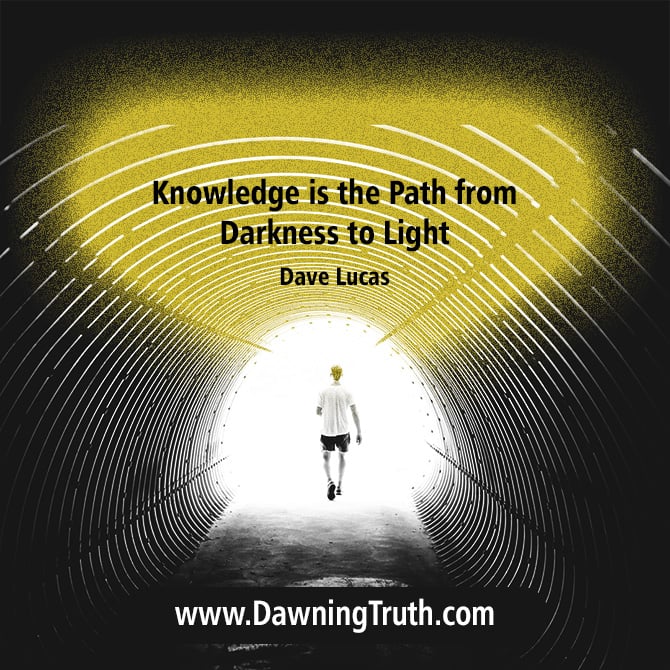
Rational Emotional Techniques are based...
- ...on the neuroscience discovery
- ...that there are actual pathways between
- ...the emotional brain
- ...and rational brain.
When we develop and strengthen these pathways...
- ...then we are more emotionally intelligent
- ...and by implication
- ...better able to deal with anxiety.
The Emotion Reason Connection
The research company Brain Surgery explains how the two brain systems function together.
Together, these interconnected brain systems work together for integrated decision making linking emotion to reason.
The Emotion and Reason systems bi-directionally influence each other to produce and refine behavior, though Emotion initiates the process and prioritizes input.
Emotion first, Reason second, and continued interaction of the two systems is the way that all people respond to their environment.

In order to understand a decision process and predict behavior, both Emotion and Reason should be considered, and more importantly their interaction.
The brain processes relevant information through the lens of Emotion, followed by Reason, which together produce our behavior.
Stimuli elicit fast emotional responses in the subcortex of the brain. These emotions are cognitively processed and interpreted in the cortex.
Integrated emotional and cognitive systems produce output behavior.
Source: http://BrainSurgeryInc.com
In times of anxiety, we experience uncontrolled emotion and impaired rationality.
That is why your emotions are able to snowball out of control.
You see,...
The Role of the Rational Brain
It is the rational part of your brain that modulates the reactions of your emotional brain.
So, if you are able to engage the rational brain in times of anxiety, you can dramatically reduce its impact on your life.
This can actually be viewed in these brain scans of a Healthy Brain and an Abused Brain.


You can see how the healthy brain is better able to integrate emotional and rational reasoning.
(The parts in the circle are the integration part.)
During times of anxiety,
- ...those parts in the circle are inactive
- ...and your brain is more like the abused child’s brain.
Anxiety and Abuse
Abuse or a difficult childhood is a leading cause of anxiety.
The same goes for abusive or high stress events experienced as adults.
Here are some of the long term consequences of abuse...
...and high stress events

Abuse and trauma reduce your ability to act...
...in a reasonable, rational way.
Literally, and physically in your brain.
That is why abused and traumatised people often experience...
...out of control emotions.
They know better... but somehow can't do better.
The link between their rational brain and emotional brain
...is broken.
Source: Providing Support to Traumatized Children
In this article...
- ...we will provide you with specific techniques
- ...that will help you
- ...connect your
- ...emotional and rational brain.
1. Eye Movement Desensitization and Reprocessing (EMDR)
EMDR was invented by Dr Francine Shapiro.
EMDR is one of the most widely researched modern therapies on Earth.
Here is a small listing of EMDR Evaluated Clinical Applications.
On February 7, 2014
- ...the UN Committee on Non-Governmental Organizations
- ...recommended that the UN Economic and Social Council
- ...grant EMDR Humanitarian Assistance Programs
- ...Special Consultative Status.
EMDR is a breakthrough therapy technique ...that rapidly accelerates emotional healing.
What took years to process using traditional psychotherapy,...
...now only takes a few minutes with EMDR.
Here is a video introduction to EMDR:
EMDR Case Study
For me, one of the most dramatic case studies I’ve ever seen
- ...of EMDR effectiveness is the case
- ...where child survivors of the 2004 Asian Tsunami
- ...were treated with EMDR.
One case in particular, touched my heart:
There was a little girl who was completely overwhelmed by PTSD (Post Traumatic Stress Disorder).
She was so terrified of the sea that she did not want to go near it.
After EMDR treatment, not only was her panic treated, but she was able to play in the ocean again.

Children treated with EMDR after the Asian Tsunami... No longer afraid of the ocean.
So how do you do EMDR?
It’s actually remarkably simple. This video will get you started.
This animations gives you the key idea of EMDR and how it is used to clear out emotional trauma.
This Tedx talk will tell you more about the history of EMDR.
2. Use Rational Emotional Behaviour Therapy (REBT)
REBT was developed by Dr Albert Ellis.
Dr Ellis is considered to be one of the most influential psychotherapists in history.
In fact he was considered to be even more influential than Sigmund Freud.

What is REBT?
The Albert Ellis Institute describes REBT as follows:
REBT is an action-oriented psychotherapy that teaches individuals to identify, challenge, and replace their self-defeating beliefs with healthier ones that promote emotional well-being and goal achievement.
Source: The Albert Ellis Institute
REBT has proven itself to be highly effective in treating Anxiety disorders.
This picture will help you better understand the logic behind REBT:

Essentially, we experience an Activating Event.
So something happens in our life.
We then respond to the event based on our Beliefs about the situation.
Our response is the consequences caused by the situation.
REBT Example
In social anxiety a person may be afraid to speak to members of the opposite sex.
This may be driven by the underlying belief that they are unsuitable as a partner.
So, when they meet someone,
- ...who they find attractive,
- ...of the opposite sex,
- ...they begin to blush,
- ...and freeze.
Becoming overwhelmed by social anxiety.
This can be 'ABC' analysed as follows:
Activating Event (A) | Meeting someone who they find attractive. |
Belief (B) | I am unsuitable as a partner. |
Consequences (C) | Freezing up and feeling Social Anxiety. |
What REBT strives to do is to...
- ...change the underlying limiting belief
- ...so that the reaction changes.
The following diagram shows how our beliefs affect our actions:

So, in this case the irrational belief:
I am unsuitable as a partner
Is replaced by the rational belief:
I am somebody’s dream partner, I just need to find that somebody.
Here is an infographic which outlines the types of limiting beliefs that are addressed in REBT.

You can download the above infographic here: Unhelpful Thinking Styles
Here is a video which explains REBT in a simple yet powerful way:
Here is an audio talk from Dr Ellis,...
...which explains how to Deal with Anxiety:
3. Rational Emotional Integration + Question (REIQ)
Rational Emotional Integration is the idea of integrating...
...the emotional and rational parts of your brain.

You can download the above worksheet from: TherapistAid.com
The wise mind as it brings the best of
...both logic and emotion to a situation.
So, how do you develop the wise mind?
How do you improve integration between your...
...rational and emotional brain?
There are two basic techniques you can use:
1. Label your emotions.

Source: MummyMusingAndMayhem
Whenever you experience an emotion, you ask yourself,
“What emotion am I feeling right now?”
And then answer the question.
Try and get specific.
So instead of just…
What emotion am I feeling right now?
Anxiety…
Get more detailed
What emotion am I feeling right now?
I’m feeling afraid that the boss won’t like my presentation
It is very important to get as detailed as possible.
As the process of analysing and determining
...the details is rational in nature.
It therefore suppresses the emotional brain to some degree…
Which brings us to step 2…
2. Contradict your emotions.
This is an unusual but highly effective idea.
- The brain hates contradictions...
- ...so if it is faced with one
- ...it will try and find a way around it.
This is powerful for dealing with anxiety.
So, the process is as follows:
Let’s use an example to illustrate the process:

We will stick to our boss presentation example.
"What emotion am I feeling right now?"
I’m feeling afraid that the boss won’t like my presentation.
"What emotion do I want to feel right now?"
I want to feel confident about giving my presentation.
Combine into a change statement
I’m feeling afraid that the boss won’t like my presentation
How can I also...
...feel confident about giving my presentation?
Make sure you answer this question
The trick is to turn the desired state into a question.
What this does is...
...force the brain to be in
...two contradictory emotional states at the same time.
It can feel quite weird...
- This effectively breaks the lock on the negative emotion,
- ...as the brain has to consider
- ...other alternatives on equal footing.
Which breaks the irrationality of the anxiety emotion.
You may still feel anxiety,...
...but it will not be out of control anxiety.
4. Self Empowerment
During times of anxiety we often limit our options.
This is because the rational part of our brain...
...is effectively NOT working.
As a result...
...we can feel like we have limited options... like
"No matter what I do, I can't prevent the horror I fear will occur"
If we think about it rationally, this is simply NOT true.
There are very few actual situations in life...
...in which you can do nothing to affect the outcome.

We know this rationally,...
- ...but during times of anxiety we don’t realise this…
- ...as our brain is not working rationally.
So how do we break our brain out of this stuck state?
We ask ourselves the following two questions:
- Reconsider what you have discarded
“What can I do about this situation that I have thought of,...
...but discarded as a solution?” - Consider new approaches
“What can I do about this situation...
...that I haven’t thought of?”
Make sure you answer these questions.

The best way is to actually sit down and write out the answers.
- That way your emotional mind will be unable to...
- ...prevent you from considering alternatives.
Further,...
when we write things down... they become more real to our mind.
This...
- ...breaks the anxiety lock in the brain
- ...and frees the mind to consider alternatives.
Let's now explore our next...
...anxiety management technique:
Continue to part 4 --> Reprogram Your Unconscious Mind
7 Ingenious Ways To Calm Your Anxiety
Contents:
1. What is Anxiety? Scientia Est Potentia...
3. Apply Rational Emotional Techniques

